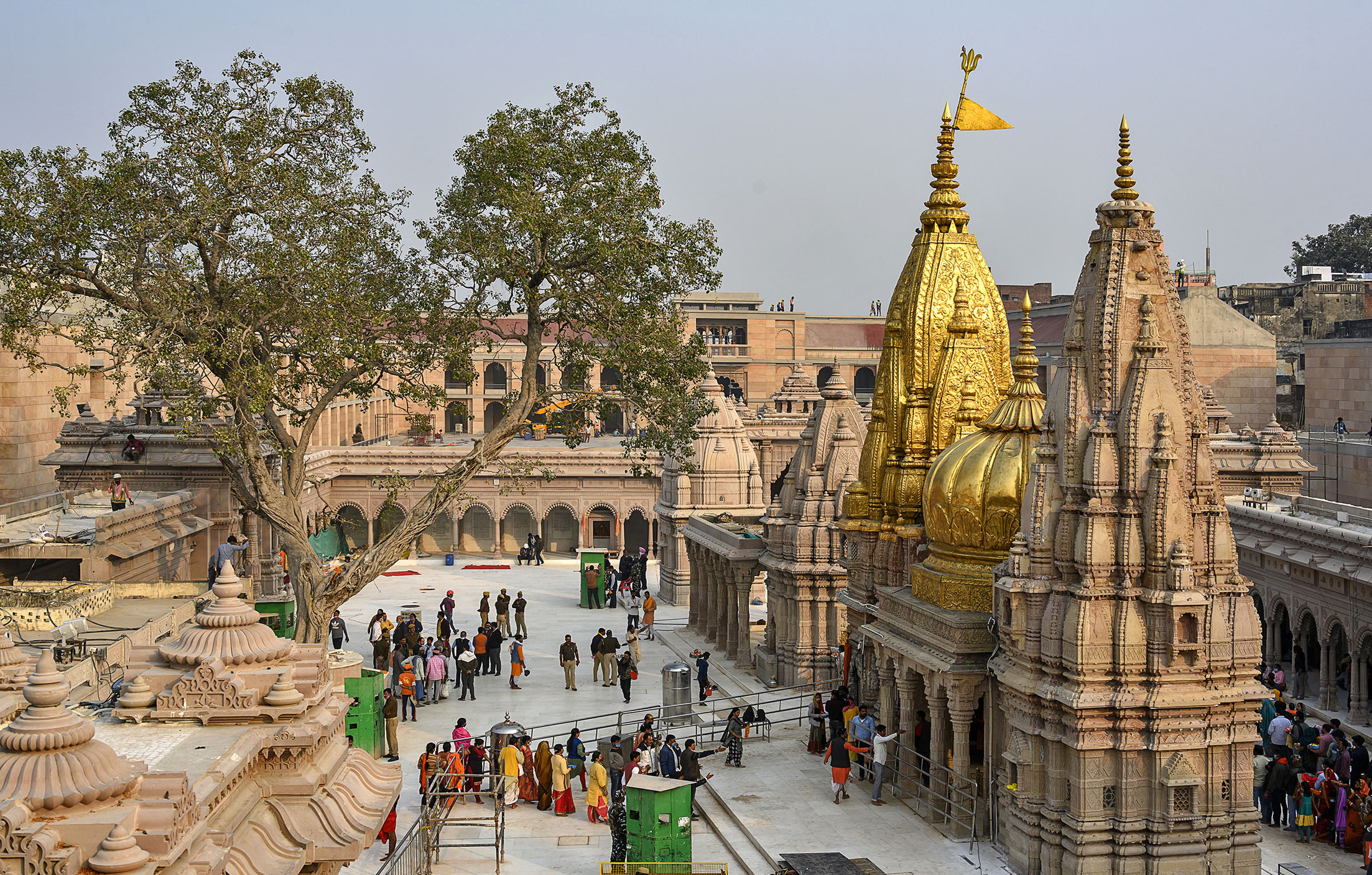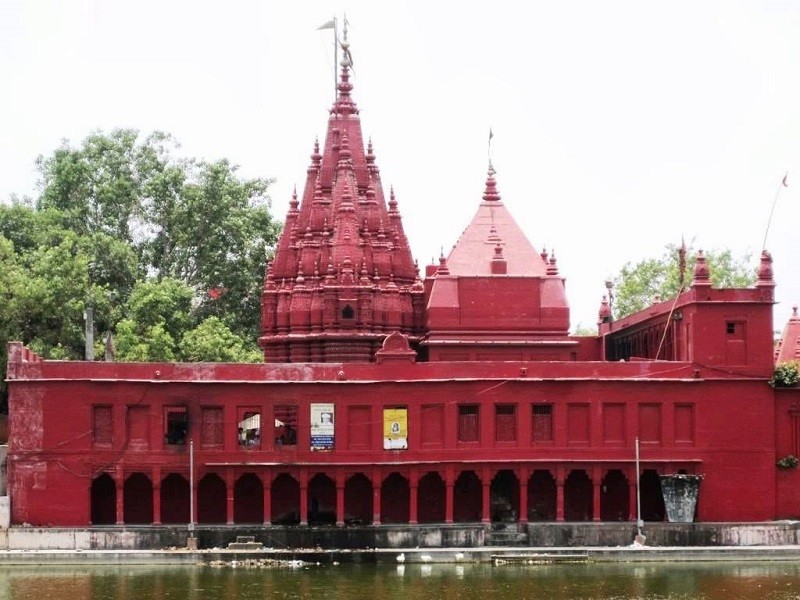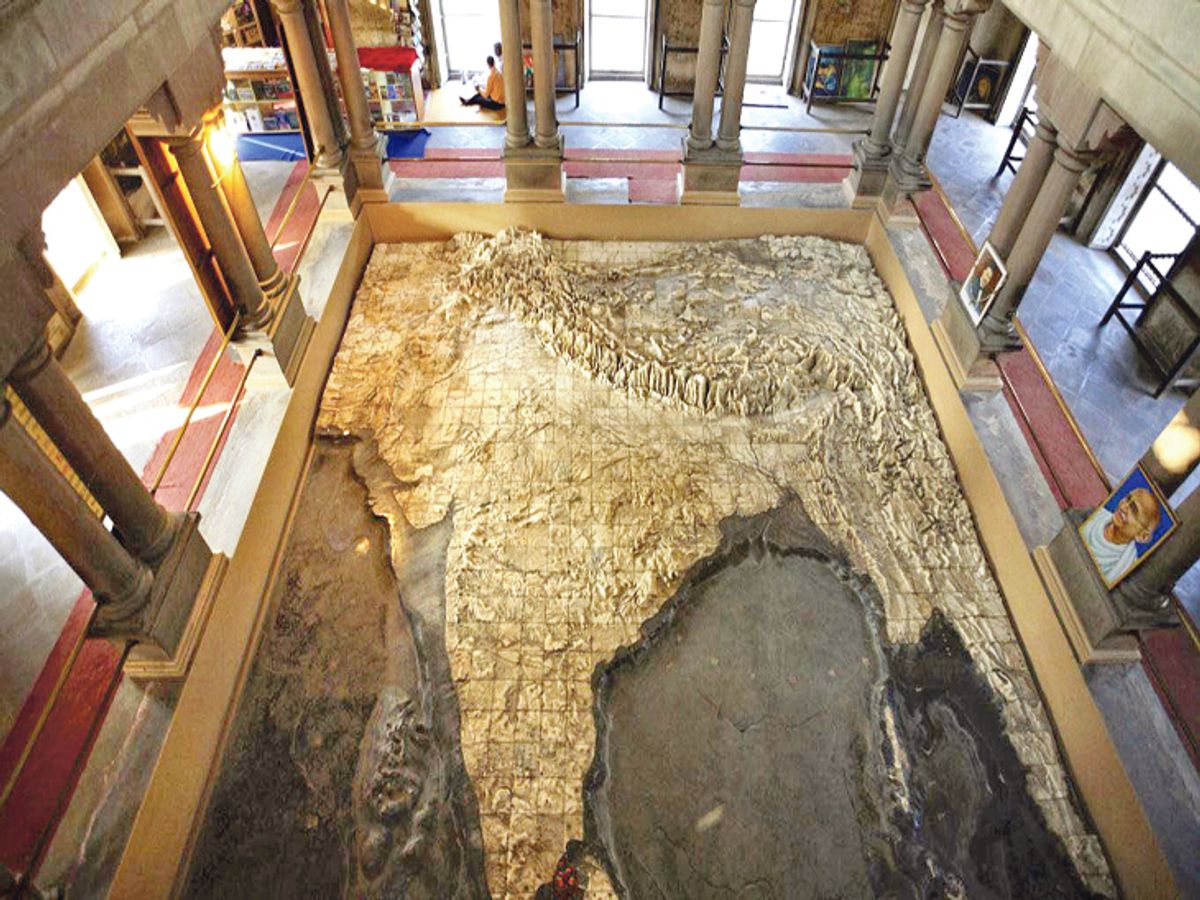Varanasi, often referred to as the spiritual capital of India, is a city steeped in millennia of religious history and significance. Situated on the banks of the sacred River Ganges, Varanasi holds a special place in the hearts of millions of pilgrims and travelers alike. One of the most defining features of Varanasi’s spiritual landscape is its plethora of temples, each with its unique charm and significance. Let’s delve into the top five temples that epitomize the spiritual essence of this ancient city, along with some frequently asked questions to enhance your understanding.
Kashi Vishwanath Temple:

Undoubtedly the most renowned and revered temple in Varanasi, the Kashi Vishwanath Temple is dedicated to Lord Shiva, the presiding deity of the city. Also known as the Golden Temple, it stands as a symbol of faith and devotion for millions of Hindus worldwide. The temple’s sanctum sanctorum houses the Jyotirlinga, a sacred representation of Lord Shiva, attracting devotees in large numbers. The temple’s magnificent architecture, adorned with intricate carvings and embellishments, reflects the grandeur of ancient Indian craftsmanship.
Durga Temple (Durga Kund Mandir):

Perched on the banks of the Durga Kund, this temple is dedicated to Goddess Durga, the embodiment of feminine power and divine energy. The temple’s vibrant red facade, adorned with intricate artwork, captivates the attention of visitors. The main deity, Goddess Durga, is depicted in her fierce form, slaying the demon Mahishasura, symbolizing the triumph of good over evil. The temple complex also houses several other smaller shrines dedicated to various deities, offering a serene ambiance for spiritual contemplation.
Sankat Mochan Hanuman Temple:

Located near the Assi Ghat, the Sankat Mochan Hanuman Temple is dedicated to Lord Hanuman, the epitome of devotion and strength in Hindu mythology. Devotees flock to this temple to seek solace and blessings, particularly during times of distress or difficulty, as Lord Hanuman is believed to alleviate all sorrows and obstacles (sankat). The temple’s tranquil surroundings, nestled amidst lush greenery, provide a peaceful retreat for meditation and prayer.
Tulsi Manas Temple:

Situated near the famous Durga Temple, the Tulsi Manas Temple holds immense cultural and historical significance. Built in the 20th century, this temple is dedicated to Lord Rama, the legendary prince of Ayodhya, and is named after the renowned saint-poet, Goswami Tulsidas. The walls of the temple are adorned with verses and illustrations from the Ramcharitmanas, an epic poem composed by Tulsidas that narrates the life and exploits of Lord Rama. Visiting this temple not only evokes a sense of spiritual reverence but also offers an opportunity to delve into the rich literary heritage of India.
Bharat Mata Temple:

Unlike traditional Hindu temples, the Bharat Mata Temple in Varanasi is a unique homage to the spirit of patriotism and national unity. Constructed in 1936 by Babu Shiv Prasad Gupta and inaugurated by Mahatma Gandhi, this temple is dedicated to Bharat Mata, or Mother India, personified as a deity. The temple does not house any idols or deities but instead features a relief map of India carved out of marble. Each state of India is depicted in intricate detail, symbolizing the unity in diversity that defines the nation. Visitors to the temple often experience a profound sense of national pride and solidarity.
Frequently Asked Questions ?:
- What is the significance of Varanasi in Hinduism?
Varanasi, also known as Kashi, holds immense significance in Hinduism as one of the holiest pilgrimage sites. It is believed to be the abode of Lord Shiva and Goddess Parvati and is considered the ultimate destination for attaining moksha, or liberation from the cycle of birth and death.
- Are non-Hindus allowed to visit the temples in Varanasi?
Yes, most temples in Varanasi are open to visitors of all faiths. However, it is essential to respect the customs and traditions of the respective temples and maintain decorum while visiting.
- What are the best times to visit the temples in Varanasi?
Varanasi attracts pilgrims and tourists throughout the year. However, festivals like Mahashivaratri, Diwali, and Navratri witness a significant influx of devotees. It is advisable to plan your visit during these auspicious occasions for a more immersive experience.
- Are there any rituals or ceremonies that visitors can participate in?
Many temples in Varanasi conduct regular aarti (prayer rituals) ceremonies, which are open to all visitors. Witnessing the mesmerizing aarti by the banks of the Ganges is a spiritually uplifting experience that should not be missed.
5. Is photography allowed inside the temples?
Photography rules may vary from temple to temple. While some temples permit photography in designated areas, others may have restrictions. It is advisable to inquire about the photography guidelines upon entry to avoid any inconvenience.
